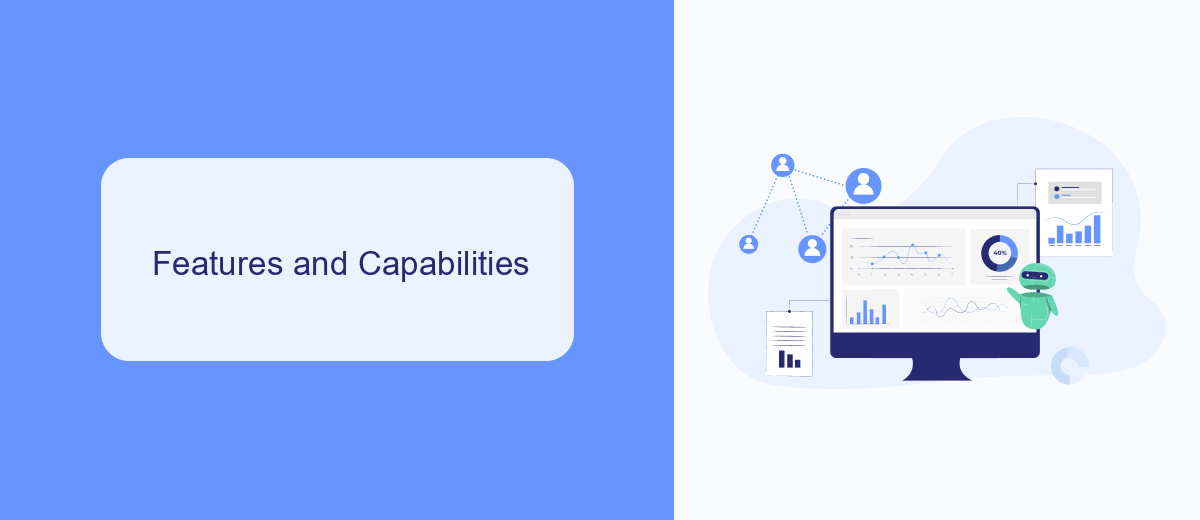When it comes to integration platforms, MuleSoft and WSO2 are two of the most prominent names in the industry. Both offer robust solutions for connecting applications, data, and devices, but they differ in various aspects such as architecture, ease of use, and pricing. This article aims to compare MuleSoft and WSO2 to help you determine which platform best suits your business needs.
Introduction
In today's rapidly evolving technological landscape, businesses are increasingly relying on integration platforms to streamline their operations and improve efficiency. Two of the most prominent players in this space are MuleSoft and WSO2. Both platforms offer robust solutions for connecting applications, data, and devices, but they have distinct features and capabilities that set them apart.
- MuleSoft: Known for its Anypoint Platform, MuleSoft provides a comprehensive suite of tools for API management, data integration, and analytics.
- WSO2: Offers a range of open-source solutions for API management, identity management, and enterprise integration, making it a popular choice for organizations looking for flexibility and customization.
- SaveMyLeads: A service that simplifies integration setup by automating the process of connecting various applications, enhancing the efficiency of platforms like MuleSoft and WSO2.
Choosing the right integration platform can significantly impact a company's ability to innovate and respond to market demands. This article aims to provide a comprehensive comparison of MuleSoft and WSO2, helping you make an informed decision based on your specific business needs.
Features and Capabilities

MuleSoft offers a robust set of features designed to streamline integration processes and enhance connectivity across various systems. Its Anypoint Platform provides a unified solution for API management, design, and development, enabling seamless data flow between applications. MuleSoft's DataWeave language simplifies data transformation, and its comprehensive monitoring and analytics tools ensure optimal performance and reliability. Additionally, the platform supports a wide range of connectors, allowing for easy integration with third-party services, including SaveMyLeads, which automates lead management and data synchronization tasks.
WSO2, on the other hand, is an open-source integration platform that excels in providing customizable solutions for complex integration scenarios. Its API Manager facilitates efficient API creation, publishing, and monitoring, while the Enterprise Integrator offers powerful tools for orchestrating services and data integration. WSO2's Identity Server provides robust security features, ensuring secure access and identity management across integrated systems. Furthermore, the platform's modular architecture allows for flexibility and scalability, making it suitable for diverse enterprise needs. Both MuleSoft and WSO2 offer extensive capabilities, but the choice between them often depends on specific organizational requirements and preferences.
Pricing and Licensing

When comparing MuleSoft and WSO2, understanding their pricing and licensing models is crucial for making an informed decision. Both platforms offer robust integration solutions, but their cost structures differ significantly, catering to various business needs and budgets.
- MuleSoft: MuleSoft operates on a subscription-based pricing model, with costs varying based on the number of cores and the level of support required. They offer different tiers, including Gold, Platinum, and Titanium, each providing varying levels of features and support.
- WSO2: WSO2 offers a more flexible, component-based pricing model. Customers can choose specific components they need, which can be more cost-effective for businesses with unique integration requirements. WSO2 also offers open-source versions of their products, which can be a significant advantage for organizations looking to minimize costs.
In addition to these platforms, services like SaveMyLeads can further streamline the integration process by automating lead data transfers between various applications, saving time and resources. This can be particularly beneficial for businesses looking to optimize their integration workflows without incurring additional costs.
Use Cases

MuleSoft and WSO2 are two leading integration platforms that cater to a variety of use cases. Both platforms offer robust tools for connecting disparate systems, automating workflows, and ensuring seamless data exchange across an organization. However, their unique features and strengths make them suitable for different scenarios.
MuleSoft is known for its powerful API-led connectivity approach, making it ideal for enterprises looking to build a network of applications, data, and devices with reusable APIs. WSO2, on the other hand, excels in providing a comprehensive open-source integration solution, which is particularly appealing to organizations with a strong preference for open-source technologies.
- API Management: MuleSoft is perfect for businesses that need to create, manage, and secure APIs efficiently.
- Open-source Integration: WSO2 is ideal for companies that prefer customizable, open-source integration solutions.
- Data Synchronization: Both platforms can be used for real-time data synchronization across various systems.
- Automated Workflows: Tools like SaveMyLeads can complement these platforms by automating lead data integration and management.
In conclusion, the choice between MuleSoft and WSO2 depends largely on the specific requirements and preferences of an organization. While MuleSoft offers a more streamlined, API-centric approach, WSO2 provides flexibility and customization through its open-source framework. Both platforms are capable of handling complex integration scenarios, making them valuable assets in the modern enterprise landscape.
Summary and Recommendations
In summary, both MuleSoft and WSO2 offer robust solutions for API management and integration, but they cater to different needs and preferences. MuleSoft excels with its user-friendly interface, extensive pre-built connectors, and strong community support, making it ideal for enterprises looking for a comprehensive and easily deployable solution. On the other hand, WSO2 provides a highly customizable and open-source platform, which is perfect for organizations that require greater flexibility and control over their integration processes.
When deciding between MuleSoft and WSO2, consider the specific requirements of your organization. If ease of use and quick deployment are top priorities, MuleSoft might be the better choice. However, if you need a more customizable solution with lower upfront costs, WSO2 could be more suitable. Additionally, for those looking to streamline lead generation and integration processes, services like SaveMyLeads can complement either platform by automating data flows and enhancing overall efficiency.
- Automate the work with leads from the Facebook advertising account
- Empower with integrations and instant transfer of leads
- Don't spend money on developers or integrators
- Save time by automating routine tasks
FAQ
What are the main differences between MuleSoft and WSO2?
Which platform is more cost-effective?
How do MuleSoft and WSO2 handle API management?
Which platform is easier to implement and maintain?
Are there services that can help with the integration and automation setup for these platforms?
Would you like your employees to receive real-time data on new Facebook leads, and automatically send a welcome email or SMS to users who have responded to your social media ad? All this and more can be implemented using the SaveMyLeads system. Connect the necessary services to your Facebook advertising account and automate data transfer and routine work. Let your employees focus on what really matters, rather than wasting time manually transferring data or sending out template emails.

